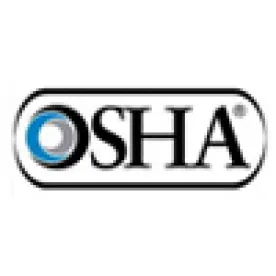The Occupational Safety and Health Administration has launched a pilot program in the Midwest region to shame employers who allegedly violate their employees’ whistleblower rights egregiously, but a critic contends the initiative may violate a company’s due process rights and unfairly ruin its business reputation.
Called the “Whistleblower-Severe Violator Enforcement Program,” or W-SVEP, OSHA said the program will be similar to the agency’s Severe Violator Enforcement Program (SVEP), which targets employers who are allegedly indifferent to or willfully ignore federal workplace safety and health standards. W-SVEP became effective on May 27, 2016, in the agency’s Region 7, which encompasses employers in Kansas, Missouri, and Nebraska, and firms under federal enforcement in Iowa.
“W-SVEP will focus on employers that engage in egregious behavior and blatant retaliation against workers who report unsafe working conditions and violations of the law,” said Karena Lorek, OSHA’s Acting Regional Administrator in Kansas City in a May 31 press release. “When employers retaliate against workers who exercise their legal rights, other workers may suffer a chilling effect and fear exercising their rights to speak up. Problems don’t get fixed, and workers get hurt. Employers that act in that manner deserve greater public scrutiny and a powerful response from OSHA.”
Program eligibility criteria include whistleblower cases deemed worthy of litigation or where the agency has issued a merit finding in connection with egregious citations, a fatality, or a rate-based incentive program for work-related injuries. Also included will be cases judged as “significant,” merit whistleblower cases where the employer is already on the SVEP log, or where the employer has had three or more merit whistleblower cases within the past three years.
Once OSHA determines an employer has met one of these criteria, the agency will place it on the W-SVEP log. After three years, a company may petition the regional administrator for a follow-up visit and removal from the program, OSHA said. At that time, OSHA will complete a comprehensive review of the company’s policies and practices to determine if they have sufficiently addressed and remedied the retaliation and their effects.
Unlike SVEP, which uses OSHA’s enforcement and public affairs resources, W-SVEP is devoted solely to exposing allegedly egregious employer whistleblower behavior to stakeholders and the general public. “It’s really all about shaming,” a lawyer representing business told Bloomberg BNA. He remarked that the pilot program raises due process considerations because an employer can land on the list even before an allegation is proven, either in court or through a settlement in which the employer admits to the allegation. Under SVEP, he noted, a determination ultimately is made that from 25 percent to 40 percent of employers never should have been listed.
Measures to inform the public will include issuing press releases announcing the employer’s inclusion on the log and providing copies of court filings and the agency’s own investigatory findings to Department of Labor agencies, federal agencies with jurisdiction over the original complaint, labor unions within the employer’s facility, and the facility’s own corporate headquarters, Loren told the media source through an OSHA spokesperson. But to the lawyer representing business, the consequences of such measures for the employer can be dramatic. “They are nothing less than a directive showing step-by-step how they intend to destroy your business reputation,” he said.
W-SVEP is all about changing corporate behavior, Lorek contended. “We hope that the W-SVEP pilot will be the catalyst that causes companies to change their behavior and instill a culture that restores employee confidence and reshapes the employer’s perspective on whistleblowing,” the OSHA official said. She added that over the past three years, four large regional employers would have met the criteria for inclusion in the program.
The pilot program is the latest agency attempt to subject employers to greater public scrutiny. OSHA recently enacted a rule that will allow the public to search online for employers’ injury and illness records.




 />i
/>i
